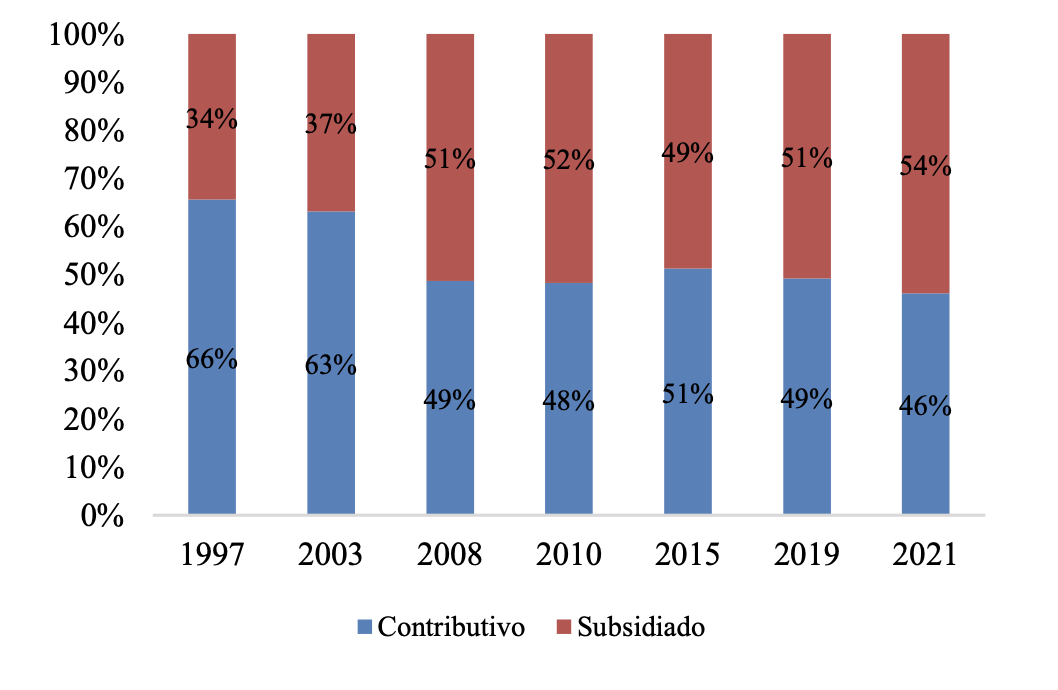The greatest achievement of the Colombian health system is the improvement in the financial protection of households. Out-of-pocket health care spending declined significantly since most medical procedures and drugs are included in the nation’s public health insurance plan.
An analysis of the evolution of health insurance coverage in urban and rural areas shows that, in 1993, coverage was 7% in rural areas and 31% in urban areas. By 2021, these coverages were 95% and 93%, respectively.
In 1993, the poorest quintile had a coverage of 4% and the richest quintile 47%, according to the income of the affiliates. By 2021, coverage for the poorest quintile was 91% and for the richest quintile 97%.
In addition, it can be seen that people in the lowest income quintile are affiliated to the subsidized public regime while people in the highest income quintiles are affiliated to the contributory regime. Thus, the document concludes that the health system in Colombia meets its equity objectives since it subsidizes people with lower incomes.


